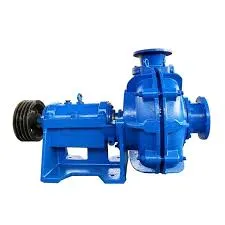Norwegian
- Afrikaans
- Albanian
- Amharic
- Arabic
- Armenian
- Azerbaijani
- Basque
- Belarusian
- Bengali
- Bosnian
- Bulgarian
- Catalan
- Cebuano
- Corsican
- Croatian
- Czech
- Danish
- Dutch
- English
- Esperanto
- Estonian
- Finnish
- French
- Frisian
- Galician
- Georgian
- German
- Greek
- Gujarati
- Haitian Creole
- hausa
- hawaiian
- Hebrew
- Hindi
- Miao
- Hungarian
- Icelandic
- igbo
- Indonesian
- irish
- Italian
- Japanese
- Javanese
- Kannada
- kazakh
- Khmer
- Rwandese
- Korean
- Kurdish
- Kyrgyz
- Lao
- Latin
- Latvian
- Lithuanian
- Luxembourgish
- Macedonian
- Malgashi
- Malay
- Malayalam
- Maltese
- Maori
- Marathi
- Mongolian
- Myanmar
- Nepali
- Norwegian
- Norwegian
- Occitan
- Pashto
- Persian
- Polish
- Portuguese
- Punjabi
- Romanian
- Russian
- Samoan
- Scottish Gaelic
- Serbian
- Sesotho
- Shona
- Sindhi
- Sinhala
- Slovak
- Slovenian
- Somali
- Spanish
- Sundanese
- Swahili
- Swedish
- Tagalog
- Tajik
- Tamil
- Tatar
- Telugu
- Thai
- Turkish
- Turkmen
- Ukrainian
- Urdu
- Uighur
- Uzbek
- Vietnamese
- Welsh
- Bantu
- Yiddish
- Yoruba
- Zulu
Telephone: +86 13120555503
Email: frank@cypump.com
Oct . 12, 2024 05:05 Back to list
Design and Applications of Double Suction Split Case Pumps in Modern Industries
Understanding Double Suction Split Case Pumps
When it comes to fluid movement in various industrial applications, the choice of pump is critical for efficiency and reliability. One prominent type of pump used in many sectors is the double suction split case pump. This specialized pump design offers several advantages that make it ideal for handling large volumes of liquids in a reliable and efficient manner.
Design Features
The double suction split case pump is characterized by its unique hydraulic design. Unlike other pump types, this pump features two inlets (suction sides) that allow fluid to enter from both sides of the impeller. This configuration not only helps balance the axial thrust but also reduces the energy losses that typically occur in single suction pumps. The split case design allows for easy access to the internal components without the need to disturb the piping system, facilitating maintenance and repairs.
The split casing also offers a robust structure, capable of withstanding significant operational pressures. This durability makes double suction split case pumps particularly suitable for applications in water supply, irrigation, HVAC systems, and various industrial processes.
Operational Efficiency
One of the defining benefits of double suction split case pumps is their high operational efficiency. The design minimizes hydraulic losses, allowing for a smooth flow of liquid through the pump. This efficiency translates into lower energy consumption and, consequently, reduced operating costs. Additionally, the ability to handle large flows while maintaining relatively low rotation speeds enhances the pump’s reliability, further extending its service life.
Moreover, the double suction configuration distributes the hydraulic load evenly across the impeller, minimizing vibrations and noise. This balanced operation not only enhances comfort in workplaces but also protects the pump components from excessive wear, thereby reducing maintenance frequency.
double suction split case pump

Applications
Double suction split case pumps are widely used in various applications due to their versatility and reliability. They play a critical role in municipal water supply systems, where large quantities of water need to be pumped from reservoirs or treatment facilities. In power plants, these pumps are essential for cooling water circulation, ensuring that systems operate efficiently under varying load conditions.
In the HVAC industry, double suction split case pumps are used for chiller and boiler feedwater, maintaining optimal temperature regulation in commercial and industrial buildings. Other applications include irrigation projects, fire protection systems, and processing plants in chemical and oil industries.
Maintenance and Support
Regular maintenance is vital to ensure the longevity and efficiency of double suction split case pumps. While their design makes them relatively easy to maintain, it is essential for operators to follow best practices. Regular inspection of sealing mechanisms, bearings, and impeller conditions can prevent unforeseen downtimes. Furthermore, proper lubrication and bearing checks are critical to maintaining the pump's operational integrity.
Many manufacturers offer support services and detailed maintenance manuals to aid operators in keeping their pumps in prime condition. Training sessions for personnel on pump operation and troubleshooting can also enhance efficiency and safety in pump operations.
Conclusion
In conclusion, double suction split case pumps stand out in the realm of fluid transfer technologies. Their efficient design, operational reliability, and versatility make them an ideal choice for various sectors. Understanding their unique features and benefits can help industries make informed decisions when selecting pumping solutions that not only meet their operational needs but also contribute to overall sustainability efforts by minimizing energy consumption and maintenance costs. By investing in double suction split case pumps, organizations can ensure effective fluid management in their operations while maximizing productivity and minimizing downtime.
-
High-Performance Air Pumps for Sand & Gravel | Efficient Transport
NewsAug.03,2025
-
ISG Series Vertical Pipeline Pump - Chi Yuan Pumps Co., LTD.|Energy Efficiency, Corrosion Resistance
NewsAug.03,2025
-
ISG Series Pipeline Pump - Chi Yuan Pumps | Energy Efficiency&Compact Design
NewsAug.03,2025
-
ISG Series Vertical Pipeline Pump - Chi Yuan Pumps Co., LTD.|High Efficiency, Low Noise, Durable
NewsAug.02,2025
-
ISG Series Vertical Pipeline Pump - Chi Yuan Pumps | High Efficiency, Low Noise
NewsAug.02,2025
-
ISG Series Vertical Pipeline Pump- Chi Yuan Pumps Co., LTD.|High Efficiency&Compact Design
NewsAug.02,2025










